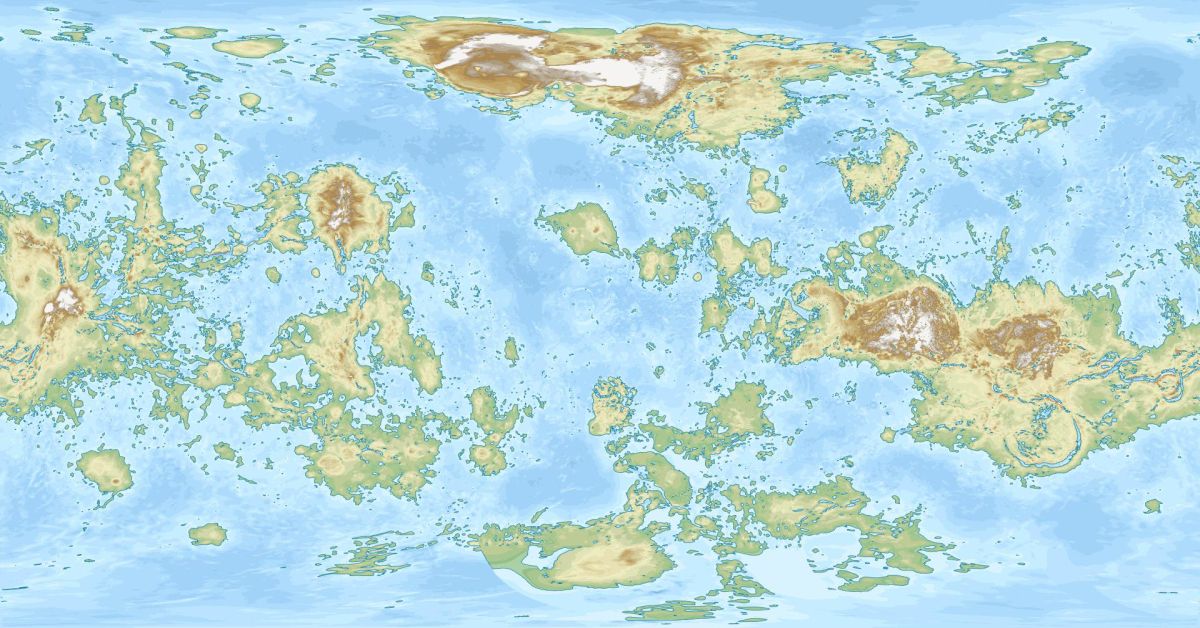Almost all water on Mars today exists as ice, although it also exists in small quantities as vapor in the atmosphere. About 3.8 billion years ago, however, Mars may have had a denser atmosphere and higher surface temperatures, allowing for the presence of vast amounts of liquid water on the surface, possibly including a large ocean that may have covered a large part of the planet. Reddit user crukey recently came up with a map showing the surface of Mars with 71% of its surface area covered with water – just like on Earth.

Also, Venus, the other planet closest to us, may have had a shallow liquid-water ocean and habitable surface temperatures for up to 2 billion years of its early history. Perhaps in response to the above rendering of Mars with an ocean, Dragonite, another Reddit user came up with a similar map of Venus that shows the planet having as much water as Earth.

Recently, scientists at NASA’s Goddard Institute for Space Studies (GISS) in New York computer modeled Venus’ ancient climate, and concluded that, indeed, ancient Venus may have been a very different place than it is today.
Today, Venus is a hellish world. It has a crushing carbon dioxide atmosphere 90 times as thick as Earth’s, with almost no water vapor present. Temperatures hit 864 degrees Fahrenheit (462 degrees Celsius) at the surface.
Scientists long have theorized that although Venus formed out of ingredients similar to Earth’s, the planet followed a different evolutionary path. Measurements by NASA’s Pioneer mission to Venus in the 1980s first suggested Venus originally may have had an ocean. But since Venus is closer to the sun than Earth and receives far more sunlight, that early ocean evaporated, with water-vapor molecules broken apart by ultraviolet radiation, and hydrogen escaping to space. With no water left on the surface, carbon dioxide built up in the atmosphere, leading to a so-called runaway greenhouse effect that created the present conditions.

Similarly, the surface of Mars was periodically wet and could have been hospitable to microbial life billions of years ago. However, the current environment at the surface is dry and subfreezing, probably presenting an insurmountable obstacle for living organisms.

But who knows? As we look closer and closer, the more and more traces of life we find. More surprises are on the horizon.
Sources: 1, 2, 3, 4, 5
